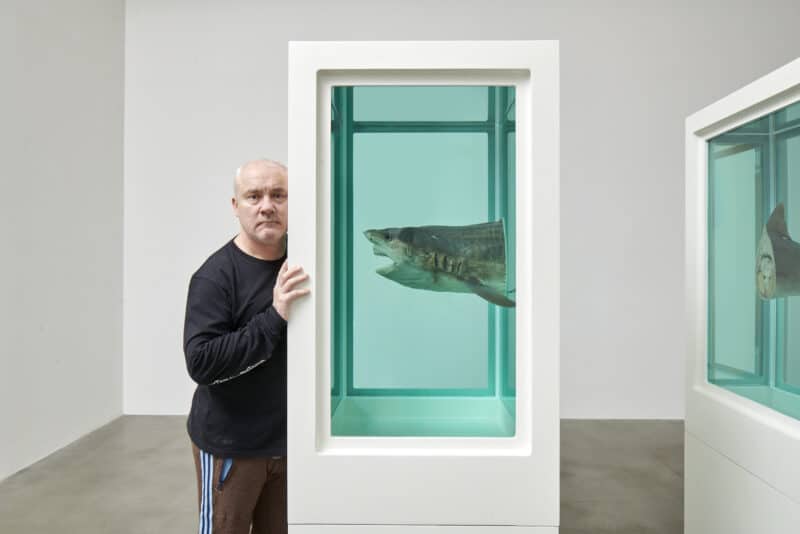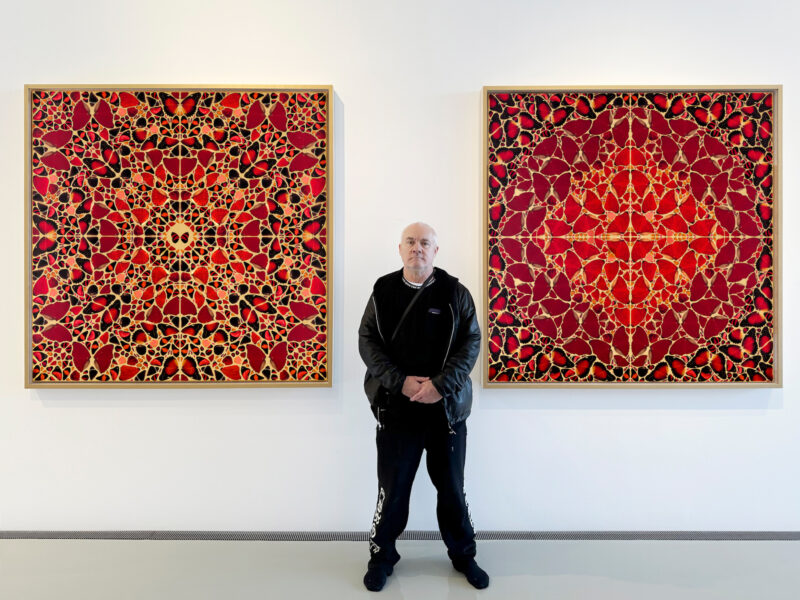
Meat The Future presents cutting-edge research on the environmental and health impacts of eating meat, and offers visitors a variety of alternatives, from simply eating less meat to adopting high-tech alternatives.
Produced in partnership with Oxford University’s Livestock Environment and People (LEAP) research programme, and generously funded by the Wellcome Trust, the exhibition also features Damien Hirst’s famous Cain and Abel (1994) artwork of two calves suspended in formaldehyde solution – a provocative catalyst for discussion of the themes raised by the exhibition.
Globally, we eat over 340 million tons of meat a year. More than 40% of grain grown worldwide is fed to cattle and an area the size of the Americas is used to graze livestock. Meat consumption is globally unequal – it varies wildly from 72 grams a week in India, to 2.4 kilograms in the United States. From field to plate, our food generates greenhouse gas emissions that contribute to climate change. So, what is the environmental impact of producing so much meat?
“With a population likely to peak above nine billion this century, Meat the Future asks how we square our growing demand for meat with the needs of the planet. An unavoidable conclusion is that we in the rich world need to reduce our per capita meat consumption, and this exhibition explores some of the ways that we, both as individuals and collectively, can make changes to our diets, as well as highlighting some of the difficult issues around making this a fair and just transition”
Professor Sir Charles Godfray, Co-Director of LEAP, Professor of Population Biology, and Director of the Martin School at the University of Oxford –
To tackle this question, visitors to Meat The Future will encounter familiar scenes: a butcher’s shop window, a bistro interior, a supermarket meat aisle. They will be able to contemplate what others think of meat-eating, see the typical weekly meat intake of different countries, and experience the selling tactics of retailers that entice us to buy more of certain types of foods.
Natural history specimens will transport visitors to the South American rainforest – an area of the world where biodiversity is under acute threat from agriculture. The displays will discuss how our food choices affect the habits of some incredible species: a gangly Spider Monkey, a beautifully patterned Cayenne Stubfoot Toad, and jewel-like Euglossine bees. According to Our World In Data, 86% of the world’s 28,000 most threatened species are at risk from agriculture and aquaculture. An animated projection will show how species numbers may fluctuate in various habitats, depending on changes in our global diet.
As a counterpoint to the exhibition, Damien Hirst’s Cain and Abel will stand in glass tanks below the exhibition gallery. Audiences familiar with Hirst’s work in a gallery space will have the opportunity to experience it in the context of the Museum court – a stunning architectural space already full of natural history specimens.
As can be expected of an Oxford University-led exhibition, Meat The Future presents some innovative ideas. The supermarket section features mock-up products carrying new ecolabel packaging developed by the University’s behavioural scientists. Just like the traffic light system of nutritional labelling gives shoppers an idea of the health impacts of each product, these labels will give consumers a snapshot of the carbon generated during the food’s production, how much chemical fertiliser and pesticides or herbicides are used, its water consumption relative to the scarcity of water in the production region, and the impact the food has on local biodiversity.
Visitors will then discover the carbon footprint of their own shopping habits in a specially developed ‘online’ shopping site. In an exciting cross-over between the exhibition and the Museum’s new Eat the Future café, visitors will be able to see and use the ecolabels when choosing from the café’s mostly plant-based menu.
Digital installations include an audio wall offering a range of opinions on a low-meat future from people with roles in agriculture, the environment and food production and retail.
“The benefits of eating less meat won’t just be felt by the planet: overconsumption of meat has significant impacts on our health. We work to provide evidence and tools which will help people to make decisions to move towards healthier and more sustainable diets, and we want to stimulate balanced and evidence-based conversations about meat and dairy, environment and health. This exhibition presents up-to-date research, as well as a range of the most likely solutions from simple meat reduction, to high-tech meat replacements, to help us all think more deeply about what we eat and how it is produced.”
Professor Susan Jebb, Co-Director of LEAP and Professor of Diet and Population Health at the University of Oxford says –
The exhibition will highlight the scale of the impact meat production and consumption has on our planet through current research untaken by Oxford University’s LEAP team and offer ideas for individuals to lower their own meat consumption, however it will also stress that the solutions to this global problem are far from straightforward. Governments, lawmakers, and industries need to get around the table and reimagine our food systems so that we can feed our growing population sustainably and in a way that provides a just food future for all. Those of us whose livelihoods and cultural identities rely on livestock production and meat consumption as we seek solutions to help us achieve net zero.
Meat The Future 28th May 2021 – 16th January 2022 Oxford University Museum of Natural History oumnh.ox.ac.uk @morethanadodo
On 28th May 2021, a new touring installation designed to get the UK talking about eating meat, its environmental impact, and how much is meat is actually good for you will launch. Meat Your Persona is a pop-up initiative drawing on research from LEAP (Livestock Environment and People) at the University of Oxford, which will begin in Cardiff and will then travel to Glasgow, Leeds, Newcastle and Blackpool to spark conversations with members of the public about the impact that eating too much meat can have on the environment and on their health. It has been created by public engagement consultancy The Liminal Space and funded by the Wellcome Trust.
About Oxford University Museum of Natural History
Founded in 1860 as the centre for scientific study at the University of Oxford, the Museum now holds the University’s internationally significant collections of entomological, geological and zoological specimens. Housed in a stunning Pre-Raphaelite-inspired example of neo-Gothic architecture, the Museum’s growing collections underpin a broad programme of natural environment research, teaching and public engagement. In 2015, the Museum was a Finalist in the Art Fund Prize for ‘Museum of the Year’. In 2016, it won the top accolade, ‘Best of the Best’, in the Museums + Heritage Awards. The Livestock, Environment and People research programme is funded by Wellcome Trust.leap.ox.ac.uk/#/









